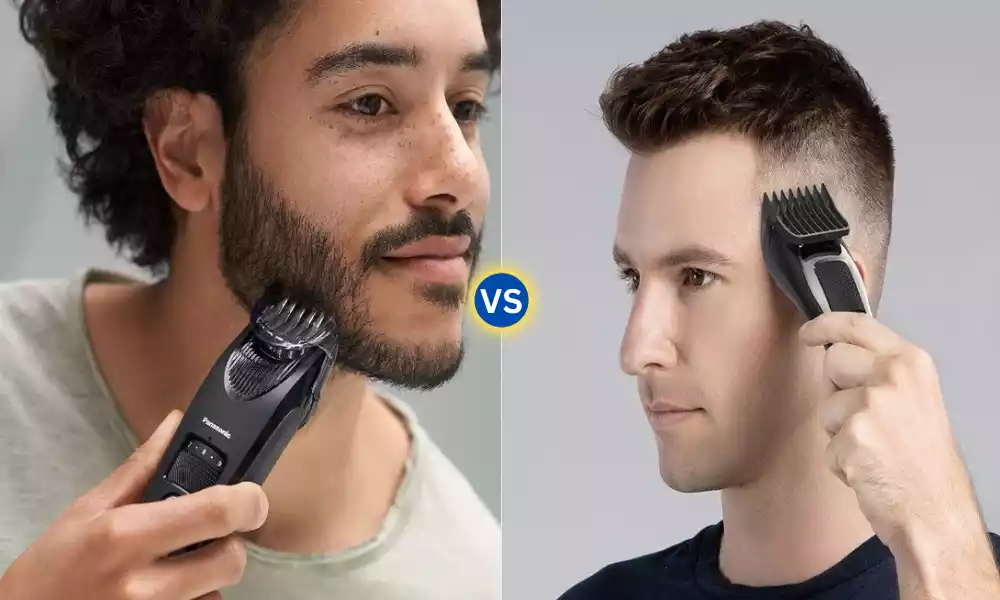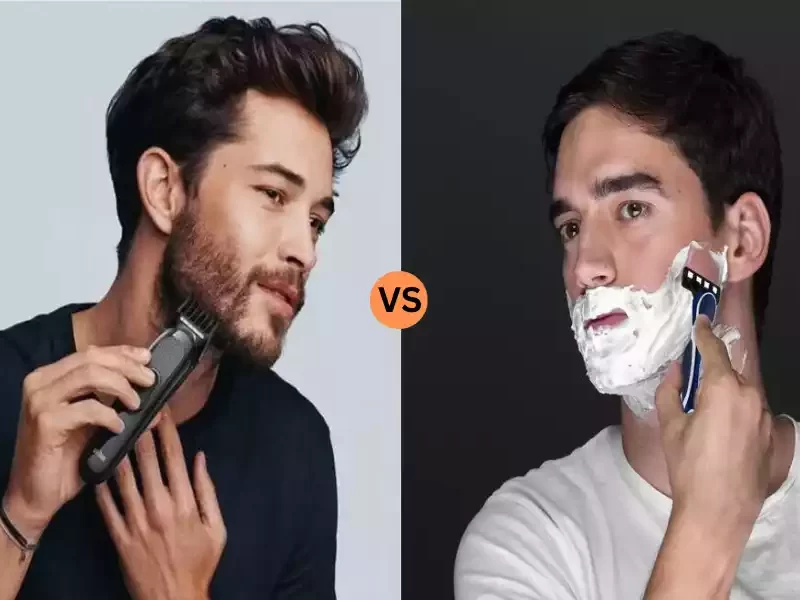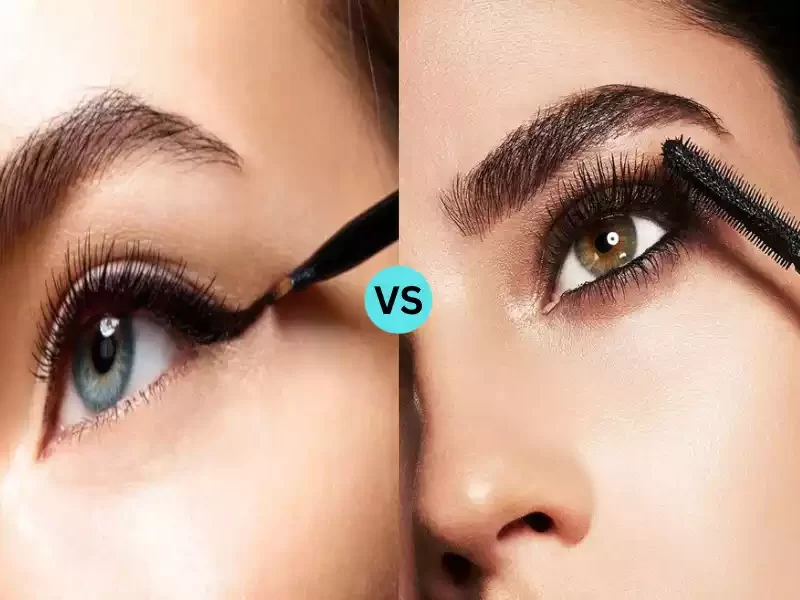Trimmer and Clipper are essential tools in the world of personal grooming and hair care. A trimmer, typically more compact and precise, is designed primarily for detail work such as shaping facial hair, refining edges, or managing hair in sensitive areas. It’s an indispensable tool for those who wish to maintain a neat beard, mustache, or even to manage body hair. On the other hand, a clipper is larger and more powerful, primarily used for cutting longer lengths of hair, making it ideal for full haircuts or reducing bulk hair. Both tools offer distinct advantages and are often used in tandem for comprehensive grooming routines.
What is Trimmer?
A Trimmer is a personal grooming device used to cut, shape, and maintain hair in various parts of the body. While it is most commonly associated with beard and mustache maintenance, trimmers are also designed to manage hair on other body parts, including the nose, ears, and even the bikini line in some cases.
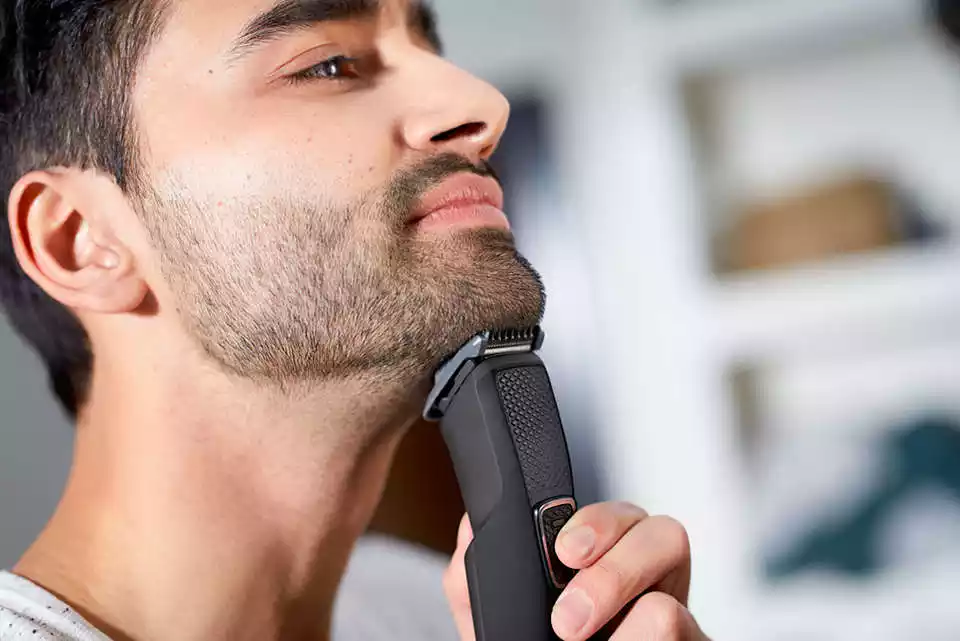
Characteristics and Features of a Trimmer:
- Precision: Trimmers are specifically designed for precision cuts and to handle finer details. They can be used to shape and define the contours of a beard, trim sideburns, or maintain a stubble look.
- Narrower Blades: Compared to clippers, trimmers generally have narrower and sometimes thinner blades, making them suitable for intricate work.
- Versatility: Many modern trimmers come with various attachments or adjustable settings that allow users to trim hair to different lengths.
- Portability: Trimmers are usually compact and lightweight, making them easy to handle and travel with.
- Battery or Corded: Trimmers can be either battery-operated, rechargeable, or corded. Battery-operated and rechargeable ones offer more flexibility and mobility.
- Other Attachments: Some trimmers are multi-functional and come with attachments to trim nose and ear hairs or even to shave.
While trimmers are great for detailing and shorter hairs, they’re not typically designed to cut very long or thick hair efficiently. For those tasks, clippers or shears might be more appropriate.
What is Clipper?
A Clipper is a powered device used for cutting hair close to the skin or removing bulk from longer hair. It functions with a pair of comb-like blades that oscillate side to side, effectively cutting the hair caught between them. Clippers are designed to handle larger hair volumes and often come with various attachments or guards to allow for different hair lengths.
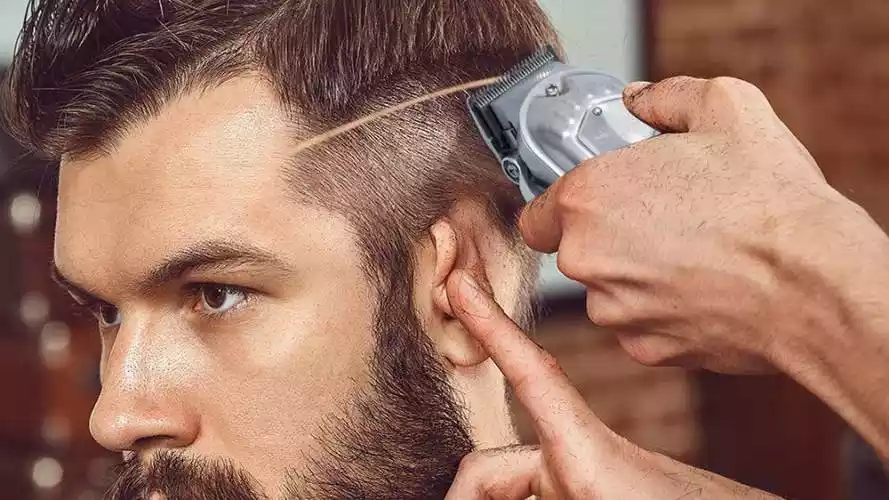
Characteristics and Features of a Clipper:
- Bulk Hair Cutting: Clippers are designed to cut large volumes of hair quickly and efficiently. This makes them ideal for basic haircuts, reducing the length of hair on the head, or removing most of the hair before using a trimmer for detailing.
- Attachments/Guards: These devices usually come with a set of attachments or guards that fit over the blades to determine the length of the cut. The numbers on the guards often correspond to the length of the hair left behind in inches or millimeters.
- Blade Material: Clippers generally have robust blades made of materials like stainless steel, carbon steel, or ceramic.
- Power Source: They can be either corded or cordless (battery-operated or rechargeable). Professional barbers often prefer corded models because they provide consistent power, while cordless models offer more flexibility and are convenient for home use.
- Adjustable Blade: Some clippers have adjustable blades, allowing the user to change the cutting length without changing the guard.
- Maintenance: Clippers usually require regular maintenance, such as cleaning after each use and occasional oiling of the blades to ensure longevity and optimal performance.
- Usage: While primarily designed for head hair, some people also use clippers for body grooming, though dedicated body groomers are available for that purpose.
A Clipper is a versatile tool that’s crucial for both professional hairstylists and individuals looking to maintain their hair length and style at home.
Comparison table of Trimmer and Clipper
Below is a comparison table for hair grooming trimmers and clippers:
| Feature | Trimmer | Clipper |
|---|---|---|
| Primary Use | Detail work such as edging, outlining, and shaping facial hair. Often used for shorter hair lengths. | Cutting longer lengths of hair and bulk hair removal. Often used for full haircuts. |
| Blade Size | Generally narrower. | Generally wider. |
| Motor Strength | Typically less powerful than clippers. | More powerful, designed to cut through larger amounts of hair. |
| Precision | High precision for fine details. | Less precision compared to trimmers but efficient for larger areas. |
| Attachments | Often come with attachments for varying hair lengths, but usually for shorter lengths. | Typically come with a range of guard sizes for different hair lengths. |
| Usage | Beard, mustache, sideburns, and other detailed areas. Can also be used for body hair. | Primarily for the head but can also be used for body hair with the right guards. |
| Battery Life | Depending on the model, may have shorter or longer battery life. Often designed for shorter use times. | Often designed for longer use times, given that full haircuts can take a while. Battery life varies by model. |
| Price | Prices can vary, but trimmers are generally less expensive than clippers. However, high-end trimmers can be pricey. | Usually more expensive than trimmers, but there’s a wide range depending on brand and features. |
Keep in mind that this is a general comparison and specific models of trimmers and clippers can vary in features and capabilities. Always check individual product details when making a purchase decision.
Factors to Consider When Choosing a Trimmer or Clipper
When selecting a trimmer or clipper, several factors should be considered to ensure you get a tool that meets your needs:
- Purpose: Determine what you’ll be using the tool for the most. For example, if you need it for detailed beard shaping, a trimmer with precision blades is essential. However, for full haircuts, a clipper would be more suitable.
- Motor Power: A powerful motor ensures smooth and efficient cutting, especially through thick or coarse hair. This is particularly important for clippers.
- Blade Quality: Look for high-quality, sharp blades, often made of stainless steel or ceramic, to ensure a clean cut and longer tool lifespan.
- Battery Life: If you’re considering a cordless model, check the battery life. A longer battery life reduces the frequency of charging, making the tool more convenient.
- Corded vs. Cordless: Cordless models offer flexibility and are great for travel, while corded models provide consistent power and don’t require charging.
- Attachments and Accessories: Check what comes with the trimmer or clipper. Multiple guard lengths, cleaning tools, and other accessories can enhance the tool’s versatility.
- Waterproofing: Some trimmers are waterproof, allowing for wet use and easy cleaning under running water.
- Ergonomics: The design should be comfortable to hold and use, especially for extended periods.
- Adjustability: Some models allow for adjustable blade lengths without changing guards, offering more versatility.
- Price: Consider your budget, but also think about the tool’s value. Sometimes, investing a bit more upfront can lead to longer durability and better performance.
- Maintenance Needs: Some models may require regular oiling or other maintenance. Ensure you’re comfortable with the upkeep.
- Noise Level: Some individuals prefer quieter tools, especially if they’re using them frequently or in shared spaces.
- Warranty and Brand Reputation: Consider the warranty period and brand reputation. A longer warranty and positive reviews can indicate a quality product.
- Travel-friendly: If you travel often, you might want a trimmer or clipper that’s compact, has a travel lock, or includes a travel case.
- Skin Sensitivity: If you have sensitive skin, look for models that are known to be gentle to reduce irritation.
By evaluating these factors based on your specific needs and preferences, you can make an informed decision and choose the right trimmer or clipper for you.
Maintenance and Care of Trimmer and Clipper
Proper maintenance and care are essential for the longevity and efficiency of both trimmers and clippers. Here’s a guide on how to maintain and care for both devices:
For Both Trimmers and Clippers:
- Regular Cleaning:
- After every use, brush off hair particles from the blades using the cleaning brush typically provided with the device.
- For a deeper clean, remove the blade head (if possible) and brush out trapped hairs.
- Oiling:
- Regularly oil the blades using the lubricating oil typically provided or any clipper/trimmer-specific oil. Apply a few drops and turn on the device for a few seconds to distribute the oil evenly. This reduces friction and wear, ensuring smoother operation and prolonging blade life.
- Oil after every few uses or if you notice decreased performance or increased noise.
- Blade Replacement:
- Depending on the frequency of use, consider replacing the blades if they become dull over time. Dull blades might pull hair rather than cutting cleanly.
- Check for Wear:
- Periodically inspect the power cord (if corded) for signs of wear or damage. Also, inspect any attachments or guards for cracks.
- Storage:
- Store in a dry place, preferably in a protective case or pouch. Avoid leaving the device in damp environments like bathrooms, as moisture can corrode the components.
Specific for Trimmers:
- Battery Care (For cordless models):
- Avoid completely discharging the battery before recharging, as this can shorten its lifespan.
- Recharge as per the manufacturer’s guidelines.
- Guard Cleaning:
- If your trimmer comes with guards, ensure you clean them as well. Rinse them under water (if they’re water-resistant) or use the brush to remove trapped hairs.
Specific for Clippers:
- Adjustment Lever:
- Some clippers come with an adjustment lever. Ensure it moves smoothly and isn’t obstructed.
- Guard Maintenance:
- Ensure guards are free of cracks and fit securely onto the clipper.
- Clean guards regularly, either with a brush or by rinsing them (if they are water-resistant).
- Screws and Fittings:
- Check the screws and fittings periodically and tighten them if they become loose.
By following these maintenance and care guidelines, you’ll ensure that your trimmer and clipper stay in good working condition, providing efficient and effective grooming for a long time.
Popular Brands and Recommendations
Both trimmers and clippers have a variety of popular brands that offer high-quality products. Below are some renowned brands and notable models (as of my last update in January 2022):
For Clippers:
- Wahl
- Recommended Model: Wahl Professional 5-Star Magic Clip
- Andis
- Recommended Model: Andis Master Cordless Clipper
- Oster
- Recommended Model: Oster Fast Feed Adjustable Pivot Motor Clipper
- BabylissPRO
- Recommended Model: BaBylissPRO Barberology MetalFX Series
- Remington
- Recommended Model: Remington HC4250 Shortcut Pro
For Trimmers:
- Philips Norelco
- Recommended Model: Philips Norelco Multigroom Series 7000
- Wahl
- Recommended Model: Wahl Stainless Steel Lithium Ion+
- Braun
- Recommended Model: Braun Beard Trimmer BT7240
- Andis
- Recommended Model: Andis Slimline Pro Li T-blade Trimmer
- Panasonic
- Recommended Model: Panasonic ER-GB80-S Body and Beard Trimmer
Recommendations:
- For professional barbers or those serious about home grooming, the Wahl Professional 5-Star Magic Clip and the Andis Master Cordless Clipper for clippers, as well as the Wahl Stainless Steel Lithium Ion+ for trimmers, are often highly recommended for their reliability, power, and precision.
- For the everyday user, brands like Philips Norelco and Braun offer excellent value, combining versatility with ease of use.
- If you’re looking for durability and a solid build, Oster and BaBylissPRO clippers and Andis trimmers are reputable choices.
- Finally, those seeking convenience might appreciate models like the Remington HC4250 Shortcut Pro clipper due to its ergonomic design and Panasonic ER-GB80-S trimmer for its wet/dry functionality.
Keep in mind that technology and models advance, so always check the latest reviews or consult with professionals for current recommendations.
Conclusion
Trimmers and Clippers are essential tools in personal grooming, each designed for specific hair-cutting tasks. While clippers are robust and designed primarily for cutting longer, thicker hair, often on the head, trimmers excel in precision tasks, focusing on detailing, shaping, and maintaining shorter hairs, such as those on beards, mustaches, and other delicate areas.
Understanding their distinct functionalities ensures optimal grooming results and can make the difference between a professional-looking cut and a haphazard one. Investing in both tools provides a comprehensive grooming solution for varied needs.

